The last UEFA Champions League matchday of the round of 16 first leg games features a clash between Borussia Monchengladbach and Manchester City. Marco Rose, a head coach who has come through the Red Bull system is famous for his pressing schemes. Meanwhile, Pep Guardiola’s team are masters of positional play concepts, and are arriving in Hungary (where the game is being played due to entry restrictions in Germany because of the COVID-19 pandemic) on the back of a very strong run.
What, therefore, can we expect from this match between two excellent teams?
In this tactical preview, a few specific tactics are investigated to predict how Pep could look to break the press and try to avoid unnecessary turnovers in dangerous areas. Monchengladbach have tried out a 3-4-1-2 formation in recent matches, but results have not gone their way, which is why we expect them to go for their usual formation – a back four.
Predicted lineups
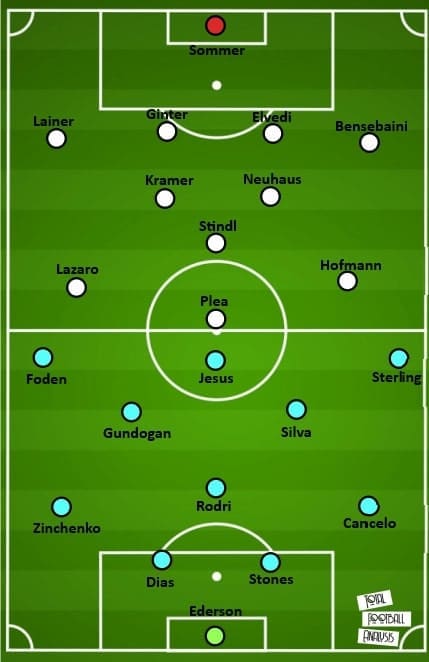
Borussia Monchengladbach: Yann Sommer; Stefan Lainer, Matthias Ginter, Nico Elvedi, Remi Bensebaini; Christoph Kramer, Florian Neuhaus; Lars Stindl, Valentino Lazaro, Jonathan Hofmann; Alassane Pléa
If they go with a back five instead, then Denis Zakaria may start to add an extra man in midfield, with Lazaro moving to left wing-back and Bensebaini joining Ginter and Elvedi as the centre-backs.
Manchester City: Ederson, João Cancelo, John Stones, Rúben Dias, Oleksandr Zinchenko, Rodrigo Hernández, İlkay Gündoğan, Bernardo Silva; Raheem Sterling, Gabriel Jesus, Phil Foden
We think Kevin De Bruyne may start this game on the bench since he has just returned from injury, and so it may not be wise to ask him to start two games in quick succession. Meanwhile, Gündoğan is undroppable at the moment, and Silva has played quite well recently.
What can we expect from Rose’s Gladbach?
Rose has been in charge of Gladbach for more than one and a half years now and has transformed Monchengladbach into a very good pressing team. They have some intelligent pressing triggers, trying to funnel the ball into areas where it can be easier to win it back, and also have a solid defensive structure to fall back into if the inital press is bypassed.
In a mid-block, they defend in a 4-4-2 that emphasizes compactness and overloads in central areas. Against a strong team like City, they will try to be patient, sitting deeper to reduce space in behind.
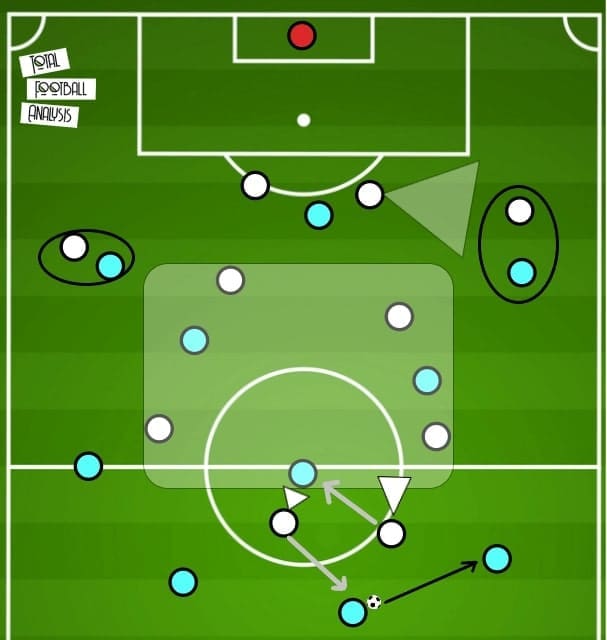
The above image shows our prediction for Gladbach’s defensive system. The offensive midfielder will step up to form the first line of the press. While pressing the centre-backs, they will need to co-ordinate to prioritize covering the pivot. Usually Monchengladbach try to prevent the opposition centre-backs from being able to easily find the pivot with diagonal passes, and so the strikers will need to be switched on to make sure he is being covered at all times during City’s build-up.
They will try to create an overload centrally with the wingers staying extremely narrow. Sometimes this shape is a 4-3-3 if the ball-side winger steps up early to control the wide centre-back; sometimes it is a 4-2-2-2 as they keep the defensive midfielders deeper, but the main concepts remain the same. By staying inside initially, the wingers should be able to cover the passing channels in the half-spaces, forcing City to go sideways with their passing.
Meanwhile, the defensive midfielders will move up and down between the lines, covering space between the first and second layer. This is not new to Kramer and Neuhaus as they have been doing this for a while in this system.
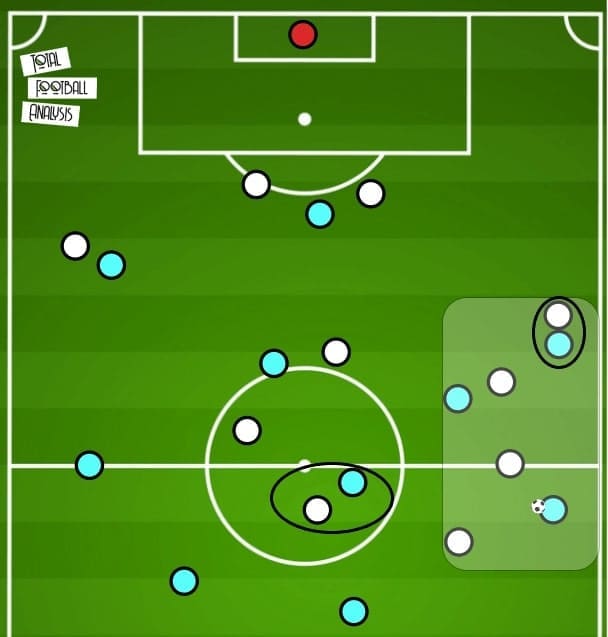
After succeeding in forcing City to pass the ball wide, they will commit numbers to close down the flank, overload the area and try to win the ball back. This shows the benefits of using multiple defensive layers. The above image shows how there are at least three layers to overload the wide area – consisting of a striker, a winger, and a midfielder.
By pressing inside-out, the running lanes of players will also shut the central passing lanes, as well as creating a natural boundary with the touchline. Also, because of the multiple directions of pressure, the receiver’s angle to pass is greatly narrowed, increasing the difficulty in getting the ball out. The Gladbach players will run vertically to attack the opposition player when any bad touches occur.
Meanwhile, to cover the winger if he drops in, the full-backs must stick tight, ensuring there is pressure behind them. Then, even if the City full-back finds the winger vertically, there is no space to turn.
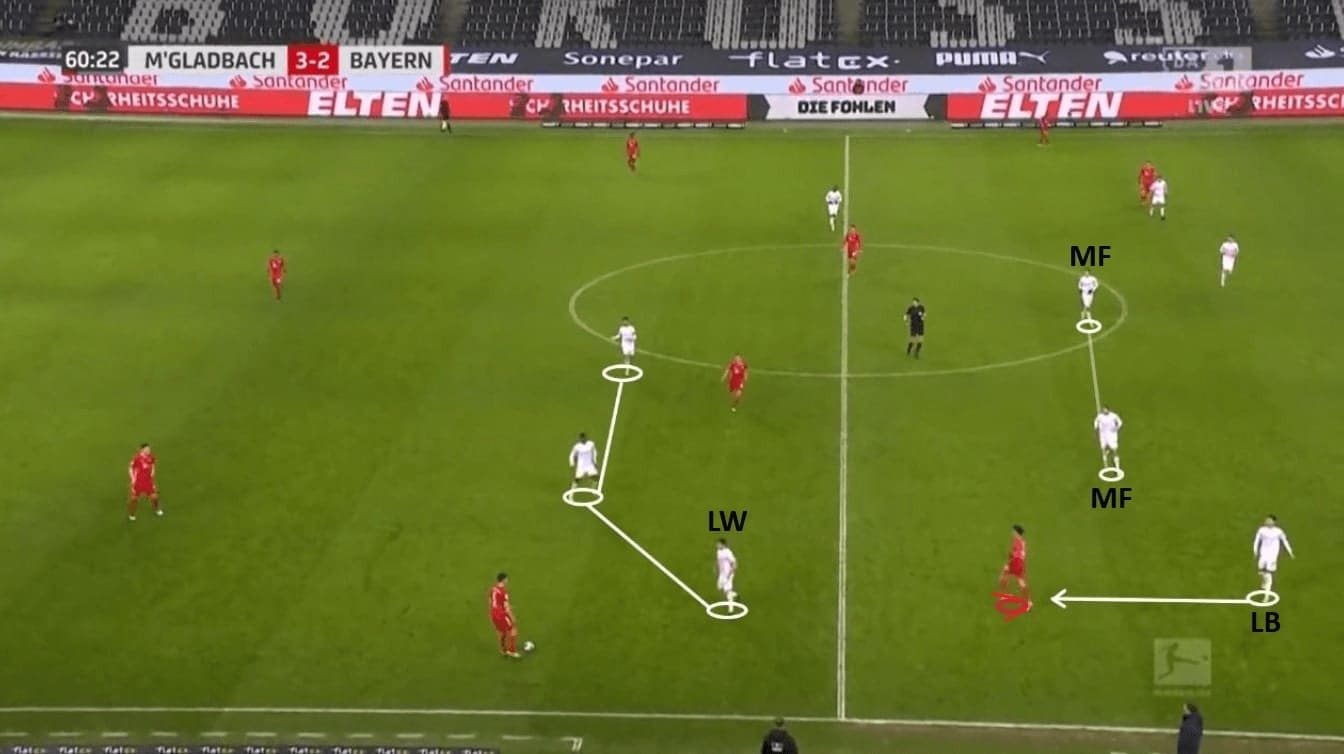
Here we can see some in-game situations of how Gladbach implement similar strategies against other teams playing out from the back. The image shows how they switch from a 4-2-2-2 midblock to a 4-3-3 after the winger steps up to cover the full-back vertically. The progression of the attack would be difficult here because all the advanced passing options are covered by Gladbach.
The left winger is closing the passing lane into the half-space when approaching the full-back, so the passing channel to try and find the winger moving infield is limited. Leroy Sané can only receive possession out wide, and his closed body shape is a bait for the left-back to press. Meanwhile, the ball-side midfielder has already moved wide, and including the left winger, they can triple-press Sané if the vertical pass to him is successful.
If the Bayern right-back takes the risk of trying to find the pivot centrally, who apparently looks like a free option, Bayern will fall into Gladbach’s pressing trap. Not only are Gladbach enjoying a numerical overload centrally, but will also be able to press the midfielder from four directions with their strikers and midfielders. We can expect to see similar plans as we have shown in the above analysis from Gladbach against City.

The last example here shows how Gladbach are going to win the ball back once the opposition moves the ball out wide. They are good at pressing the ball from different angles. The image shows how the full-back sticks tight to the dropping winger, forcing him sideways with a closed body.
When the receiver cannot turn, the ball is trapped out wide and this is a signal to press. To win the ball and double-press, the winger will need to go back to help the full-back. In this case, they win the ball back in the opposition half, starting a counter-attack in a dangerous area.
How can City respond
Confronting pressure and compact defensive blocks is nothing new for City; they have faced teams with a similar style of play in England such as Ralph Hasenhüttl’s Southampton. They should have a good idea of what to expect from Gladbach, and Pep’s arsenal has sufficient tools to find the right solutions.
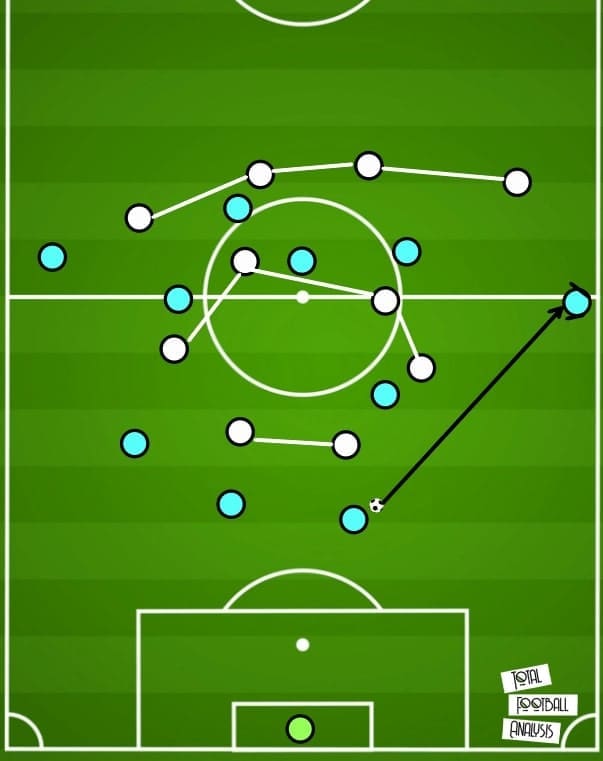
Despite staying compact centrally to keep a numerical advantage, Gladbach have struggled with their spacing in midfield. They often leave the wide spaces open without protection and City can capitalize on this.
The above image shows ideas on how to exploit these spaces. To cover the half-spaces and gain better access to the City midfielders, the Gladbach wingers will need to stay narrow, leaving the diagonal passing lane to the wide channels open. By inverting the full-backs, or using the pivot to manipulate the positioning of the Gladbach players, City should be able to use that diagonal passing lane to find their wide players on the flanks.
For example, the right-sided centre-back should try to play a line-breaking ball to the winger that goes past two layers, advancing the attack into the final third directly. Then, players such as Phil Foden, Riyad Mahrez or Raheem Sterling out wide, City can attack with different combinations in a dynamic manner. Since we do not expect a very high first pressing line from Gladbach, the City centre-backs should have time on the ball and they need to make good use of it.
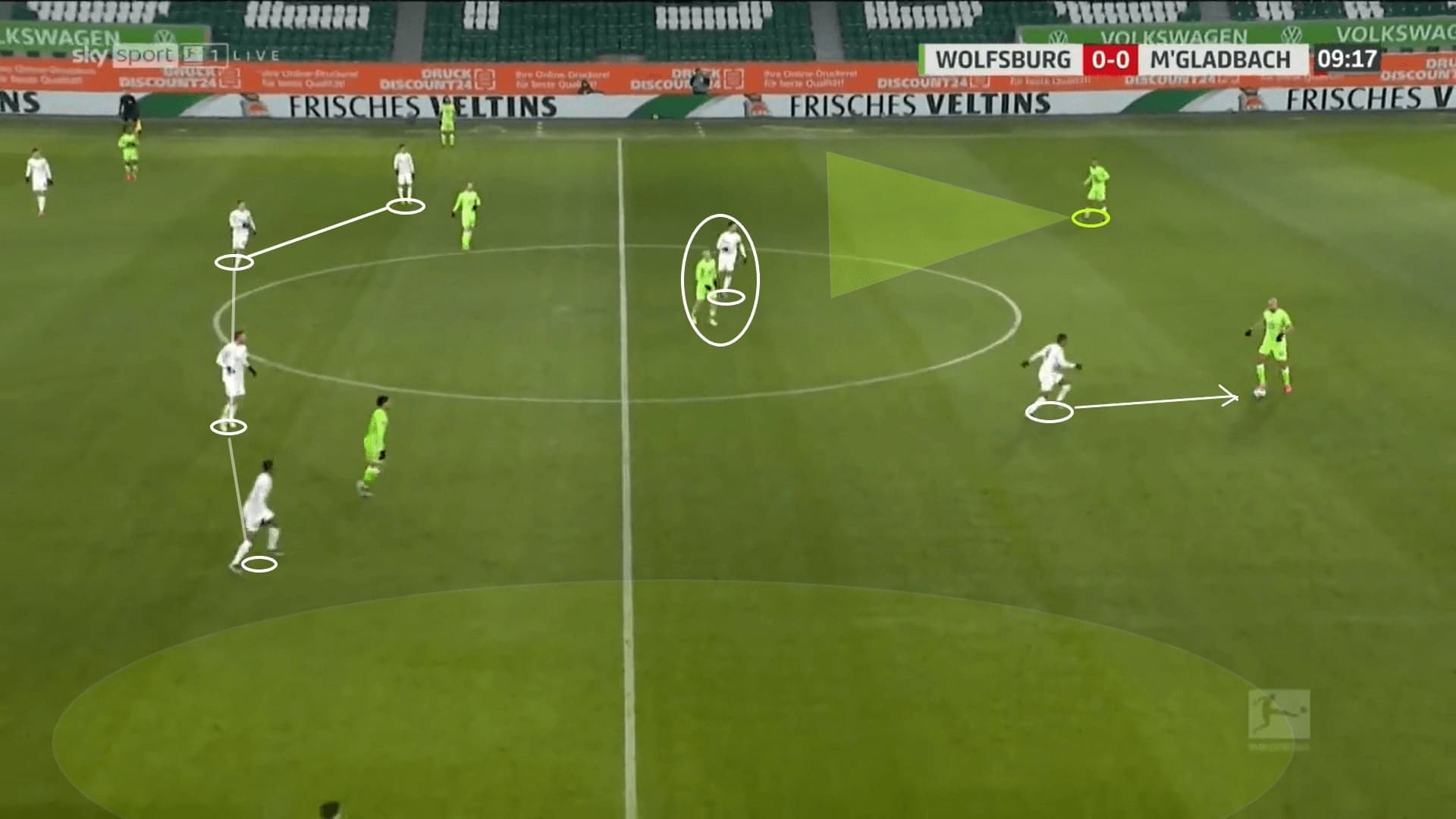
This in-game example gives some further ideas on what City can do on the pitch. There are a few strategies City could try when constructing an attack. Firstly, against the front two of Gladbach, they should at least maintain a “+1” or even “+2” numerical advantage. This could be done by Rodri or Cancelo dropping into the line with the centre-backs. The above image shows how the two Wolfsburg players attracted Gladbach’s front two, creating space for the right-sided centre-back to bring the ball forward. When that moment arrives, the City centre-back must be quick to exploit it, or else that space would be shut down very soon.
The other space is in the wide areas, as we explained earlier. You can see the whole Gladbach block staying narrow at the centre, and having a numerical overload in that area. However, the Wolfsburg left-back is unmarked, and if the centre-back can release him behind the winger, he will be able to run on to attack the defence directly. Therefore, we suggest that City should use ‘orthodox’ wingers to maximize this space – Foden on the left and Sterling on the right.
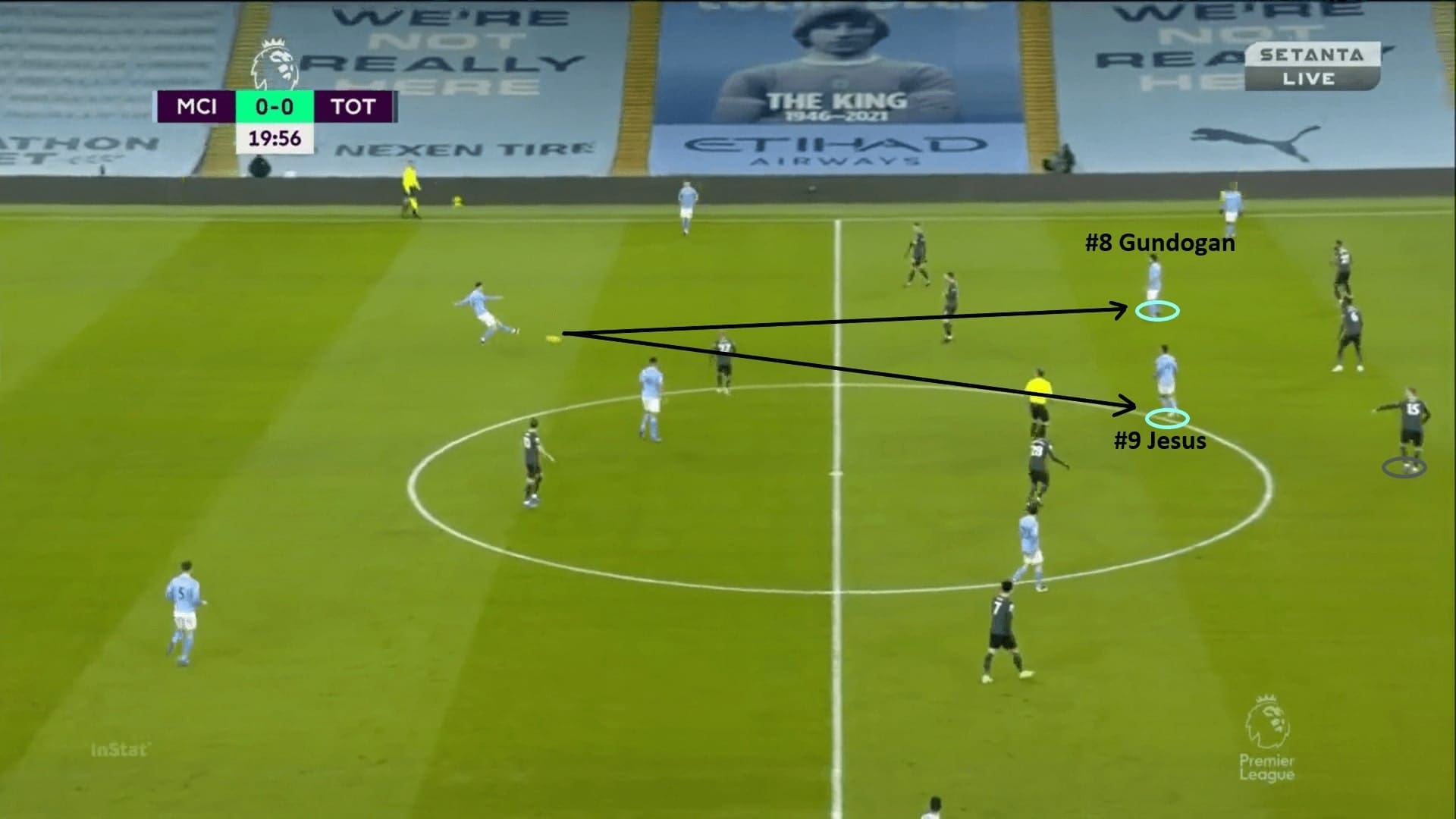
City should also do things as they do usually in the Premier League, such as manipulating the second line. By releasing Gündoğan away from the holding role and Jesus dropping deep as the “false-9”, they can create many options behind the midfield to occupy Gladbach’s defence.
The above image shows Gündoğan and Jesus both staying behind Spurs’ second layer, creating two viable options for the centre-backs. The key is to drop at the right time, on the blindside of the midfielders. If they dropped too soon, the space is closed and if they are too late, they will not get rid of their markers.
We believe similar behaviours could work against Gladbach as their centre-backs are not aggressive at defending space in front. Engaging their second line would allow them to open up the aforementioned space out wide, or create the 3v2 scenarios during the build-up phase.
Gladbach’s specific weaknesses
In addition, we have also seen a weakness in Gladbach’s play that has cost them some goals this season. If City can exploit those issues, they should be able to create some clear-cut opportunities inside the penalty area.
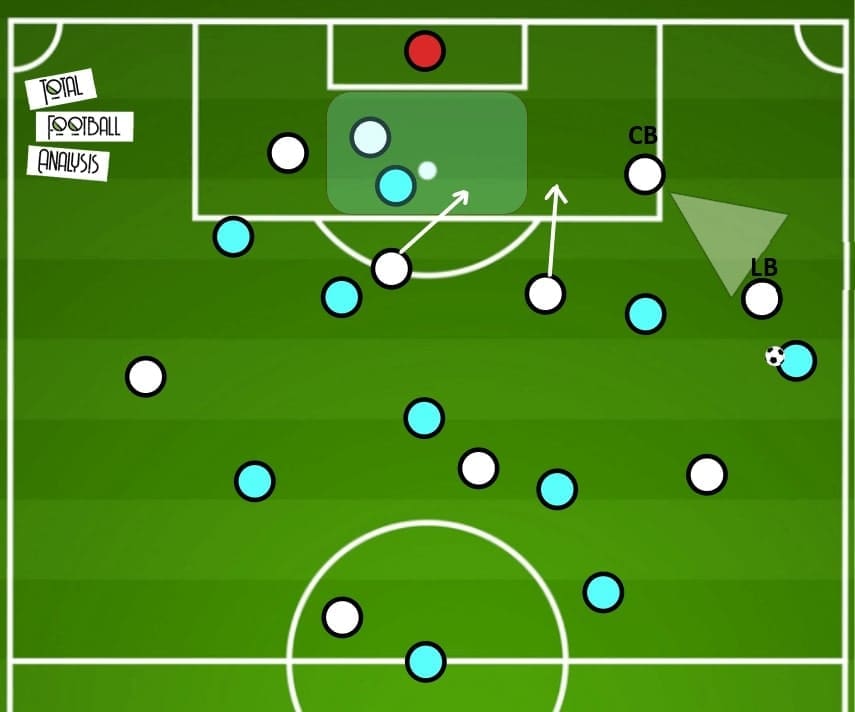
The issue is down to the defensive scheme that Gladbach have used this season. Their full-backs are always encouraged to step up early and engage opposition wingers. This leaves the centre-backs responsible for covering the space behind the full-backs, instead of the midfielders. When that happens, Elvedi and Ginter are not good at co-ordinating their movement. Eventually, one of the centre-backs is left isolated at the centre, defending large spaces, and this can be exploited.
As the above image has shown, the likes of Kramer or Neuhaus could defend deeper to protect space around the penalty spot, but they might not always do so as defending the wide spaces is also their job. There will, therefore, be occasions where only one centre-back is defending centrally.
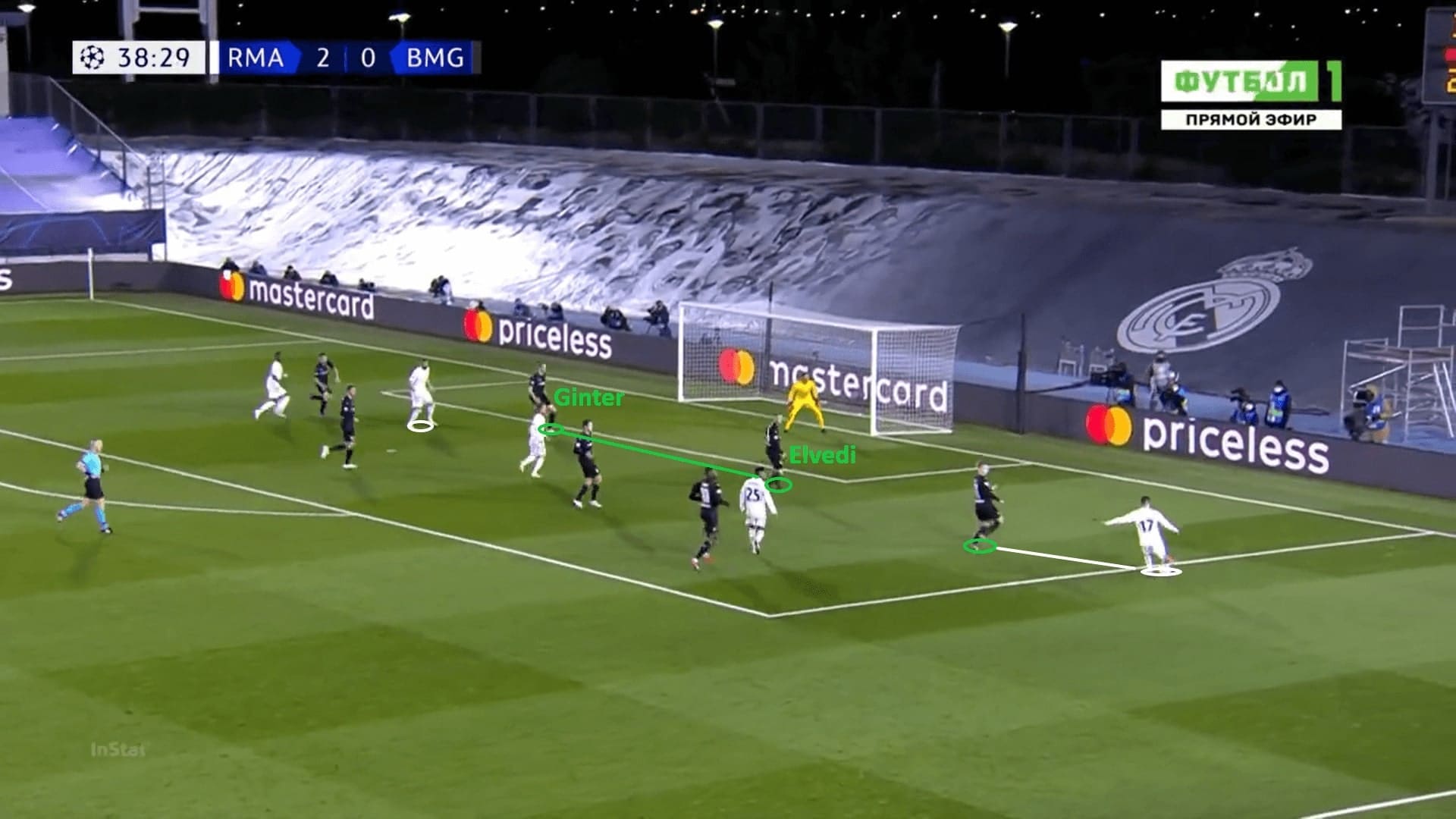
Because of this habit, they suffered a lot in the away game against Real Madrid, for example. Not only did they concede two goals because of Ginter failing to defend his space, but there were also some clear-cut opportunities are given away. For example, the above image is a case where you can see Ginter and Elvedi are away from each other. Karim Benzema is lurking behind Ginter, right on his blindside, and could possibly run behind and in front of the centre-back, with the German unable to track his run and defend his area as a result.
Another factor that keeps creating these scenarios is their inability to stop crosses. Oscar Wendt, the left-back in this game, was poor at preventing the cross or creating a poor angle for the crosser. The likes of Bensebaini and Lainer have similar issues as well. Among all types of crosses, they are particularly bad at defending early balls into the box, and so City should try to exploit this issue to create opportunities. Even though we have suggested that De Bruyne may not start this game, this is one area where he could be a potent threat if he features.
Final remarks
Gladbach are a strong team – they have beaten Bayern Munich and Borussia Dortmund in the league in 2021, and managed to qualify for the round of 16 from the so-called ‘group of death’, along with Real Madrid. With the quality of Hofmann, Thuram and Stindl, they should be able to create some good counter-attacking opportunities as well, and they will need to be switched on for the entirety of this game to get any sort of positive result.
City are currently the best team in Europe, topping the Premier League comfortably ahead of Leicester City and Manchester United. However, can their players perform at the same level as they do week in and week out in England? In the past, individual errors have been fatal to City’s Champions League hopes, and this must not happen again. If they manage to stay relatively error-free, and counter Gladbach’s press, they should be able to win this game.

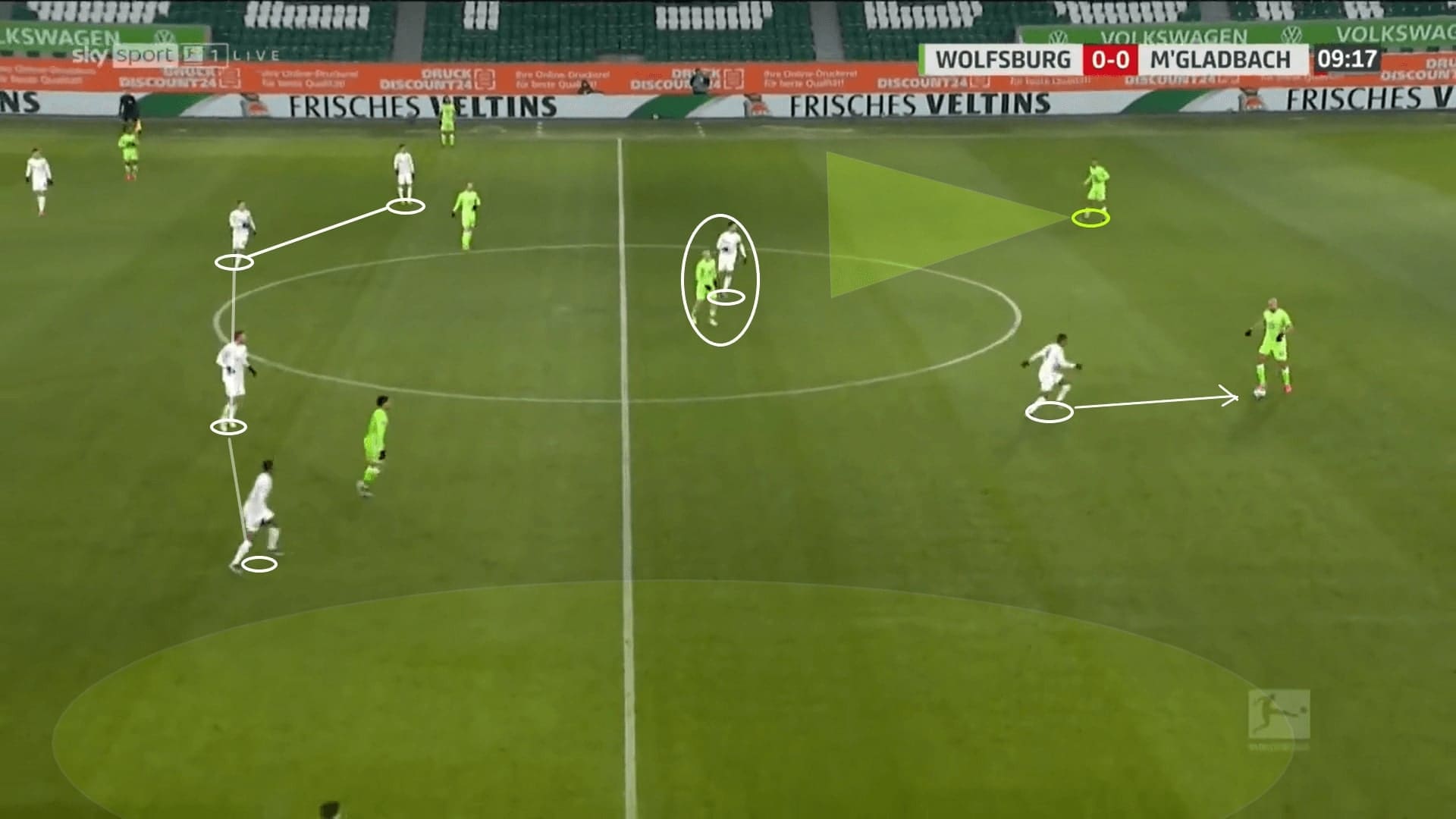



Comments